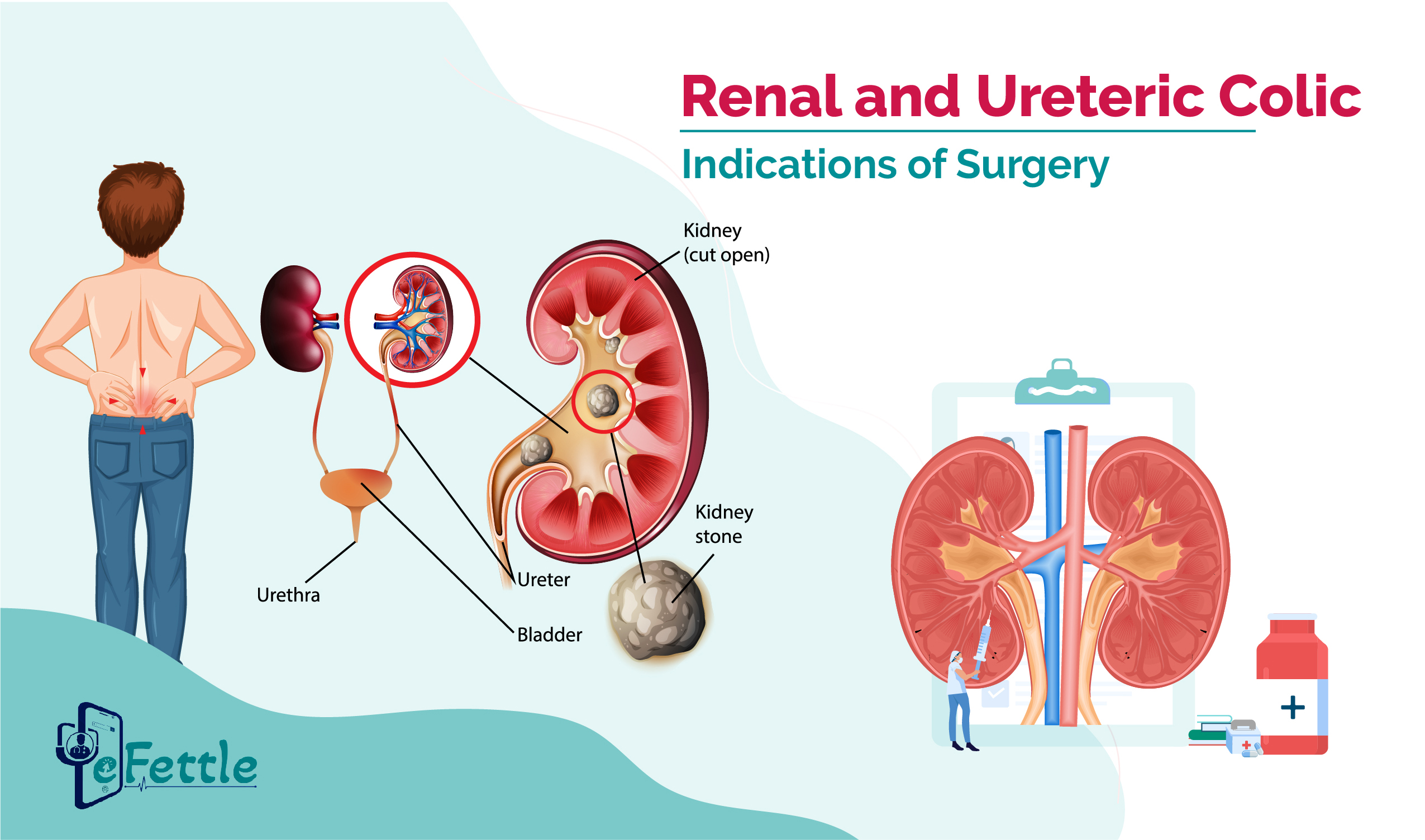

Renal and ureteric colic
Renal colic is a severe form of flank pain which radiates to groin or testicle.No where in urology have there been such dramatic changes as in the management of upper urinary tract stones.Over the past decade the advent of percutaneous surgical techniques and subsequently of external shock wave lithotripsy have radically altered the options available.
The diagnosis of renal/ureteric colic can usually be made from the history of severe loin pain radiating to ipsilateral iliac fossa and testis or labium majus,associated with nausea and reflex vomiting.On urine analysis the presence of microscopic hematuria will add weight to the diagnosis.Xraykub, ultrasound abdomen and pelvis and CT KUB are the diagnostic investigations.
The most initial effective management is usage of analgesics,antiemetics and IV fluids.Subsequent management will depend on the size of the stone,site of the stone,the presence or development of complications and progress of conservative management.The common areas of hold up or impaction of ureteric stones are at the pelviuretericjunction,the pelvic brim or above the vesico ureteric junction.
Indications of surgery
Urgent:complete obstruction of a solitary kidney or bilateral complete obstruction,evidence of infection above the impacted stone.
Early surgery is undertaken when it is obvious that the stone is not going to pass,i.e;when there is a stone size greater than 1cm diameter or the patient has persisting,unremitting bouts of ureteric colic.
Surgical management techniques include shock wave lithotripsy,ureteroscopy and percutaneous nephrolithotomy.

How to lose Weight in healthy way
Achieving a healthy weight loss can be a journey, but by following ...
Read More

Are you suffering from Erectile dysfunction?
Erectile Dysfunction, commonly referred to as ED, is a sexual healt...
Read More

Retrograde ejaculation Dry ejaculate causes and how to manage?
Retrograde ejaculation is a condition in which semen goes into the ...
Read More